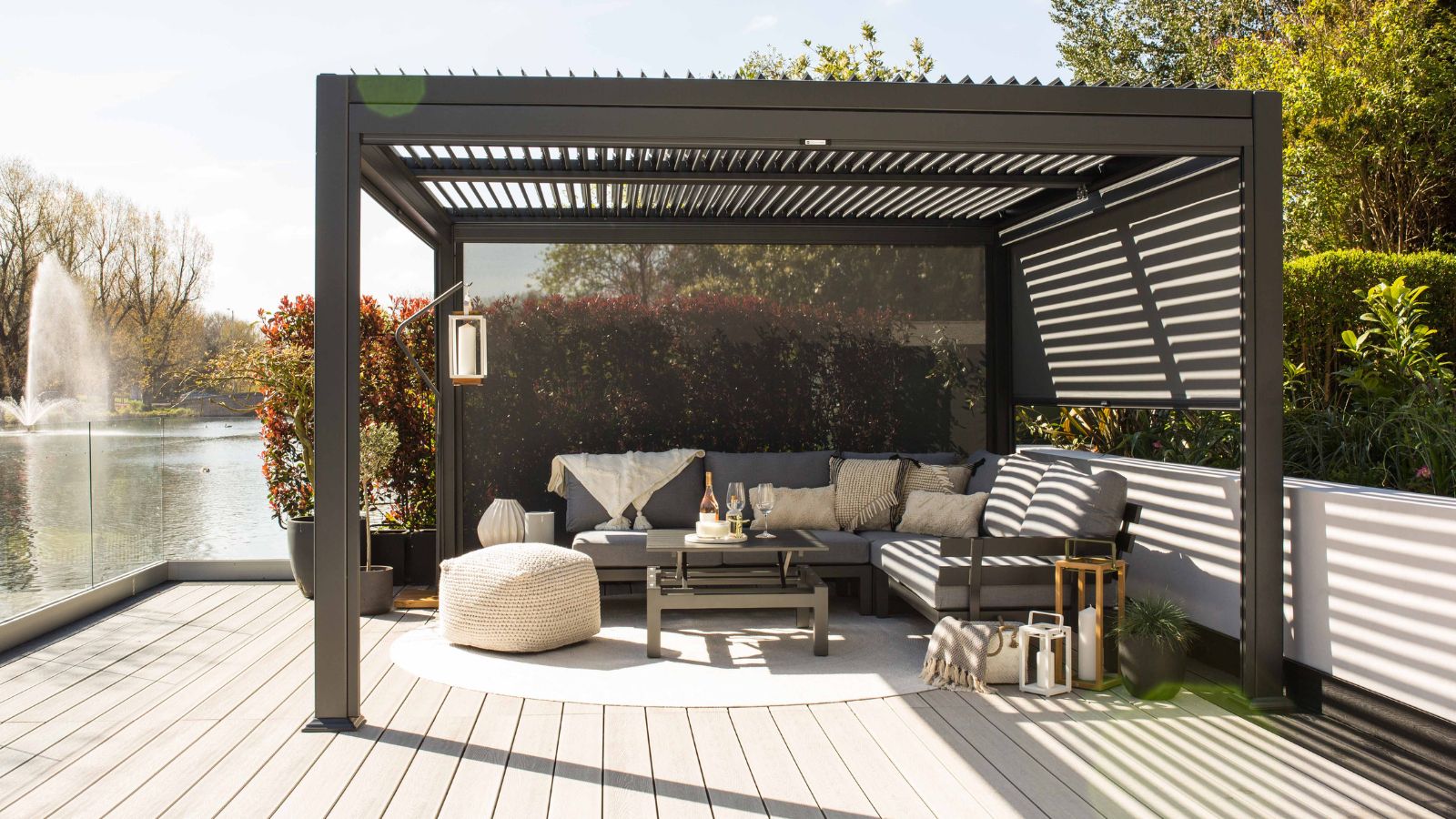How to lay carpet and the carpet laying tools you'll need for a pro finish
Knowing how to lay carpet is a skill every DIYer should have. Here we run you through the steps you need to know and the tools you’ll need to get the job done
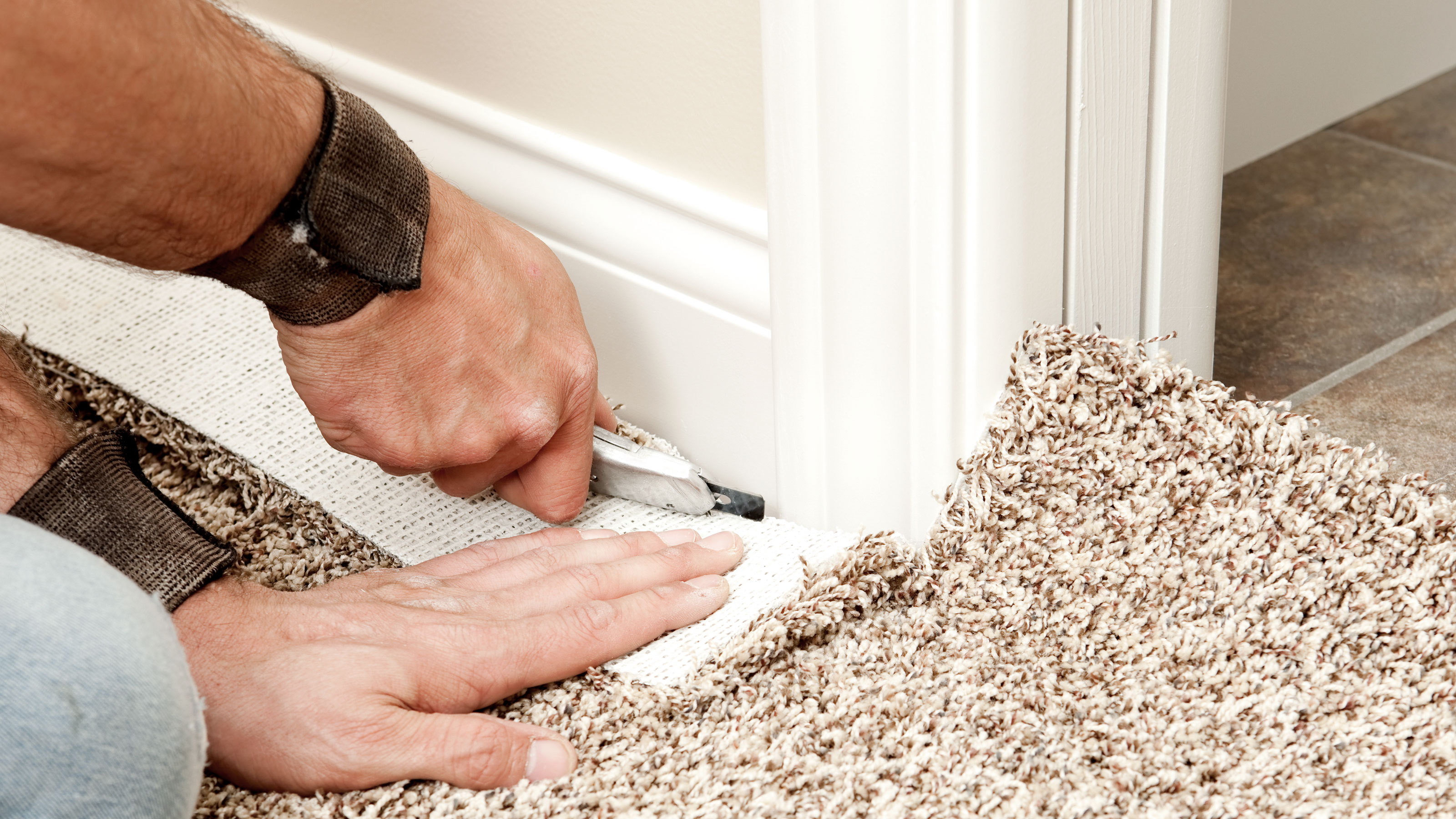
Learning how to lay carpet isn't as difficult as you might think and it means you could have a new carpet adorning your home in just a few hours.
No waiting for a carpet fitter to come and do the job for you. All you need is a few tools and some DIY know-how, which you can find in this guide.
The hard part is choosing the best carpet for your living room, hallway, stairs, or wherever you want to carpet. And don’t forget your underlay as we always recommend that you don’t skimp on underlay. A good quality underlay is almost as important as the carpet and will help ensure a great finish.
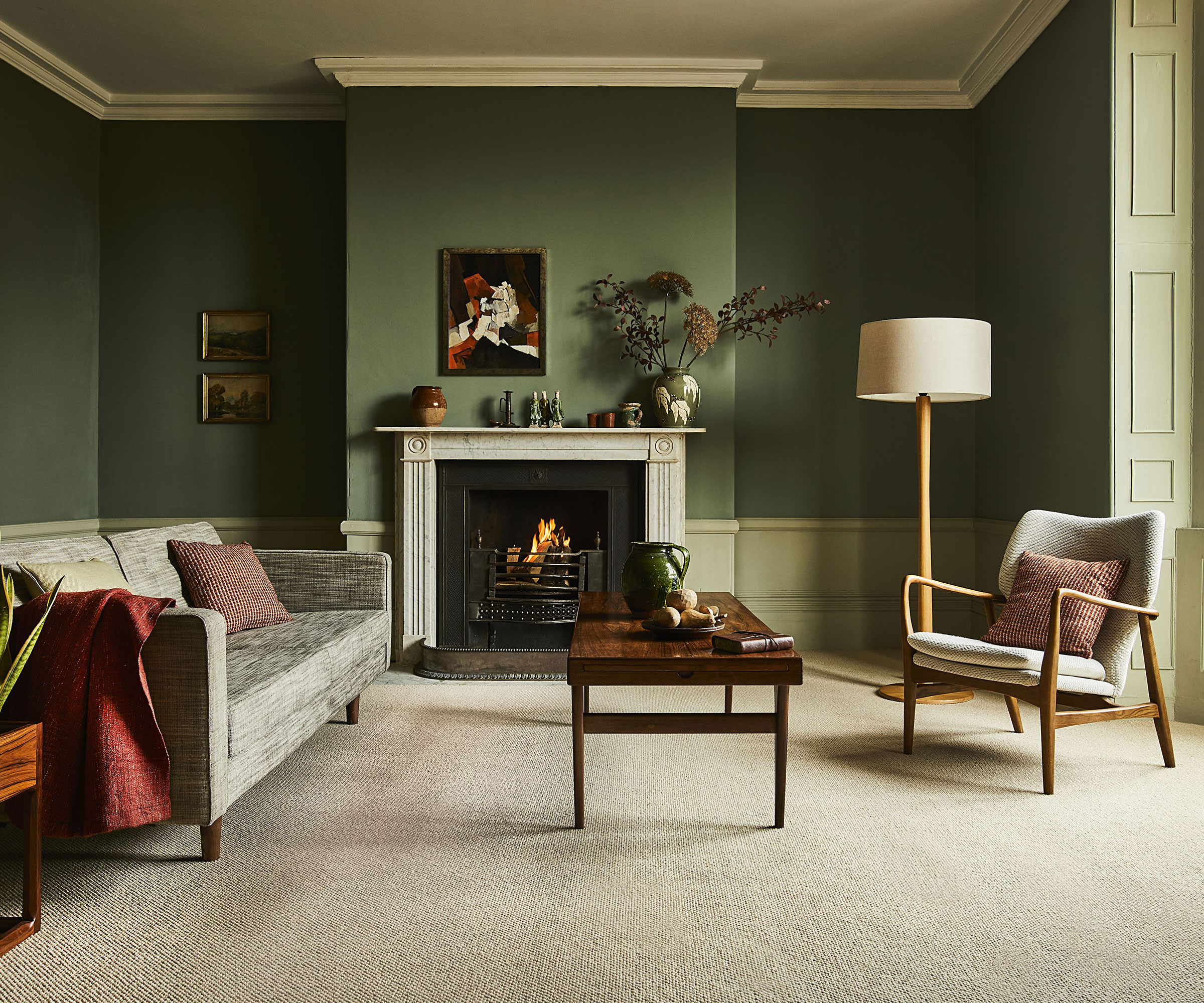
How to lay carpet in 8 easy-to-follow steps
If you can empty your room it will be much easier and quicker to lay the carpet. Make sure you have all your tools and carpet ready before you start.
The tools you'll need
- Heavy duty gloves
- Knee pads, such as these non-slip knee pads from Amazon
- Knee kicker
- Carpet bolster
- Sharp knife
- Gripper rods
1. Measure up and get your carpet
The first step is to measure up your room and purchase your carpet. You will need to know how to work out m2 of a room to make sure that you have enough carpet to work with. Add approximately 10% on top to be sure. Now head to your local carpet store or order online.
2. Prep the floor
With the old flooring removed you need to prep the floor. First give the floor a good sweep and check for any rogue nails or screws and remove. If you have any creaky floorboards you will need to deal with these before you continue.
Now vacuum the floor to get rid of any dust and debris and check if there are any hidden pipes or wires around the edges under the floor where the grippers are going to go. You can lift the floorboards to take a look or use a pipe and cable detector.
3. Lay carpet grippers
Carpet grippers like these FloorPro Premium Carpet Gripper Rods from Amazon are essential for laying a carpet. Place them around the perimeter of the room – cut where needed – around 8mm from the skirting board. You might want to wear heavy-duty gloves as there are a lot of pins in the gripper rods.
Use a piece of wood as a spacer to help get the same measurement around the whole room. Make sure that the angled edge is pointing towards the skirting board and nail in place.
If there are difficult to reach areas with a hammer – like under a radiator – you can glue the gripper into place with an adhesive like this Evo-Stik Gripfill Max adhesive from B&Q. Remember to remove the fixing nails first.
4. Add your underlay
Before you lay the underlay, lay down a floor lining paper to help protect the carpet from dust, add an extra layer of insulation and stop the underlay sticking to the floorboards. You can use newspaper like carpet fitters did in the old days or even lining paper for walls.
Now get your underlay and lay on the floor up to the edge of the grippers and cut with a sharp knife like this STANLEY FATMAX Retractable Folding Knife from Amazon to fit. Make sure not to overlap edges, the underlay needs to be smooth and flat. When all your underlay is down get some heavy-duty tape to tape the joins together.
5. Lay your carpet loosely
Unroll your carpet, start in a corner opposite the door, hold a corner of the carpet and with one foot under the carpet, pull it towards you and manoeuvre into place. Do the same on different edges if needed to get it into position.
Once the carpet is laid out, put both feet on the carpet around 0.5m to 1m from the edge and do little forward jumps to help push the carpet towards the edges and flatten it out. Make sure there is excess carpet at every edge.
6. Cut corners and excess
Push the carpet into a corner and use your sharp knife to make a vertical cut around 10-15cm. This helps push the carpet into the corner. Do this for all corners. Now fold over the carpet on each wall or edge and cut off any large sections of carpet if necessary. Make sure you are left with around 50-75mm of excess on all edges.
7. Stretch and hook onto gripper
Now you need to stretch the carpet before hooking it onto the gripper. You will need a carpet stretcher like this ROBERTS Deluxe G.T. Carpet Knee Kicker from Amazon.
Start in a corner that's diagonally opposite the door. Place the knee kicker on one edge near the corner, approximately 10mm from the edge, push down and give the padded end a whack with your knee.
Tuck in the carpet with a carpet bolster like this Draper Carpet Laying Bolster from Amazon. Repeat this for about a metre in both directions from the corner.
Now head to the corner at the other end on the longest side and do the same again to stretch. Now stretch the areas in between.
Now head to the opposite corner from where you started on the short side and stretch into the corner. Now do the same to the carpet in between.
Finally, stretch the final corner and all the edges that haven’t been hooked on to the gripper. You will still have excess left over which you deal with next.
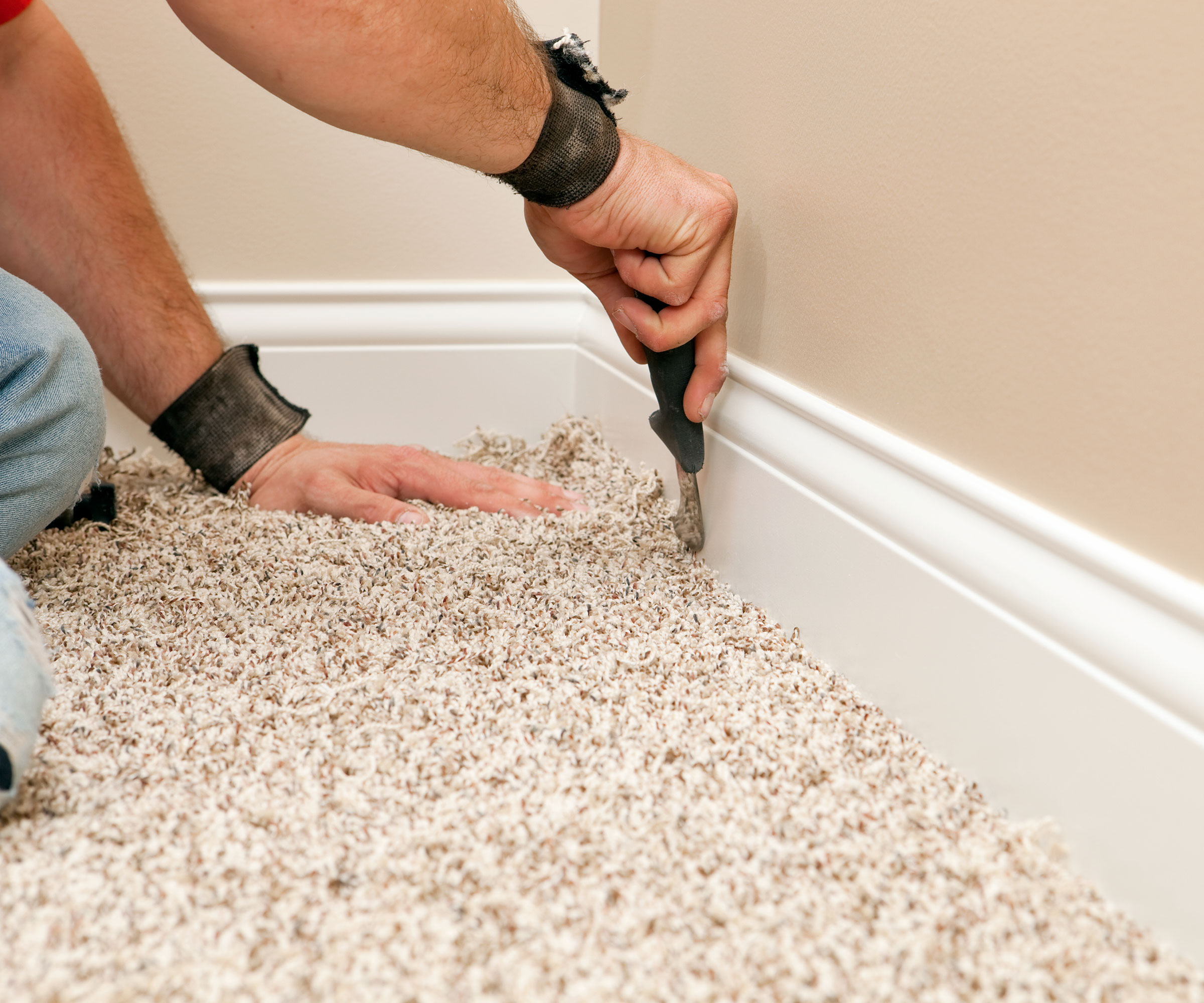
8. Trim and finish
You should now have a neat, well stretched and smooth carpet. If there are any areas that aren’t, lift off the gripper and stretch again.
Start in one corner, fold over the carpet and push down to create a crease. Now get your sharp knife and cut the carpet – you'll be cutting through the back of the carpet – close to the skirting board.
This should be around 5-10mm, just enough to tuck in to create a neat edge. Do this along all edges. Finally, get your carpet bolster and push in the edges to create a neat clean finish.
FAQs
What type of underlay do I need for a carpet?
Underlay is an essential component when laying carpet and there are a few options to choose from as Alexandra Ellis, Marketing Manager at Cormar Carpets reveals, “One of the most versatile choices is foam underlay. Perfect for hallways and stairs, foam underlay is soft and lightweight as well as being a great choice for noise reduction and insulation.
A more traditional form of underlay, felt underlay provides excellent cushioning as well as a reasonable level of noise reduction and warmth. Felt underlays are typically made of wool, making them a cheaper option that’s easier to lay.”
Alexandra continues, “Crumb rubber underlay is also a great option for anyone looking for a more eco-friendly option. Made mostly from entirely recycled materials that are densely packed together, it’s a great option for rooms with heavy furnishings as it will protect your carpet from indentations.”
Finally, carpet is not always laid on floorboards, it can be laid on concrete which uses a different underlay as Alexandra explains, “One of the best carpet underlays for concrete floors is an underlay called sponge rubber underlay. It’s also the best carpet underlay for underfloor heating as it allows heat from the underfloor panels to escape into the room efficiently.”
What happens if you don't stretch a carpet?
“If a carpet is not stretched tightly enough when fitted, it will not keep its form or stay in place” explains Sarah Jenkinson, Product Manager at Kingsmead Carpets. “It is always recommended that this is done when the carpet is initially laid. You can re-stretch old carpets in less than a day if you know how to do so, however, if the carpet is over 10 years old, the carpet fibres will become worn and damaged, making it necessary to replace them rather the re-stretch.”
Can you lay carpet without grippers?
It is recommended that you use grippers for most carpets that use an underlay. You can lay carpet without grippers, but it won’t retain its shape and lay as well as a properly stretched carpet.
You can use a strong double-sided tape for underlay and carpet but this isn’t an ideal solution. It may work for a while especially if the carpet isn’t walked on frequently.
Carpet tiles do not use grippers; they use an adhesive to stick to the floor. You can buy carpet tiles that are self adhesive for quicker installation. But these will need to be laid on a sound surface. So if laying on floorboards it's a good choice to put down hardboard first to create a smooth, flat surface.
Do I need a different type of carpet for stairs?
The simple answer is no, but choosing a durable carpet that can withstand a lot of foot traffic is important as Sarah Jenkinson, Product Manager at Kingsmead Carpets reveals, “While specific carpet is not needed for stairs, the Hideaway Polypropylene Carpet from Kingsmead Carpets offers several advantages for stairs. It is highly durable and can withstand the wear and tear of daily foot traffic. It is also stain-resistant and easy to clean”.
She continues, “Stripes are also a very popular choice for stairways as it can lead the eye upwards, enlarging the appearance of the room above and below. When it comes to colour, don’t be afraid to go for dark and bold hues as this can create a sense of drama when one enters a home.”
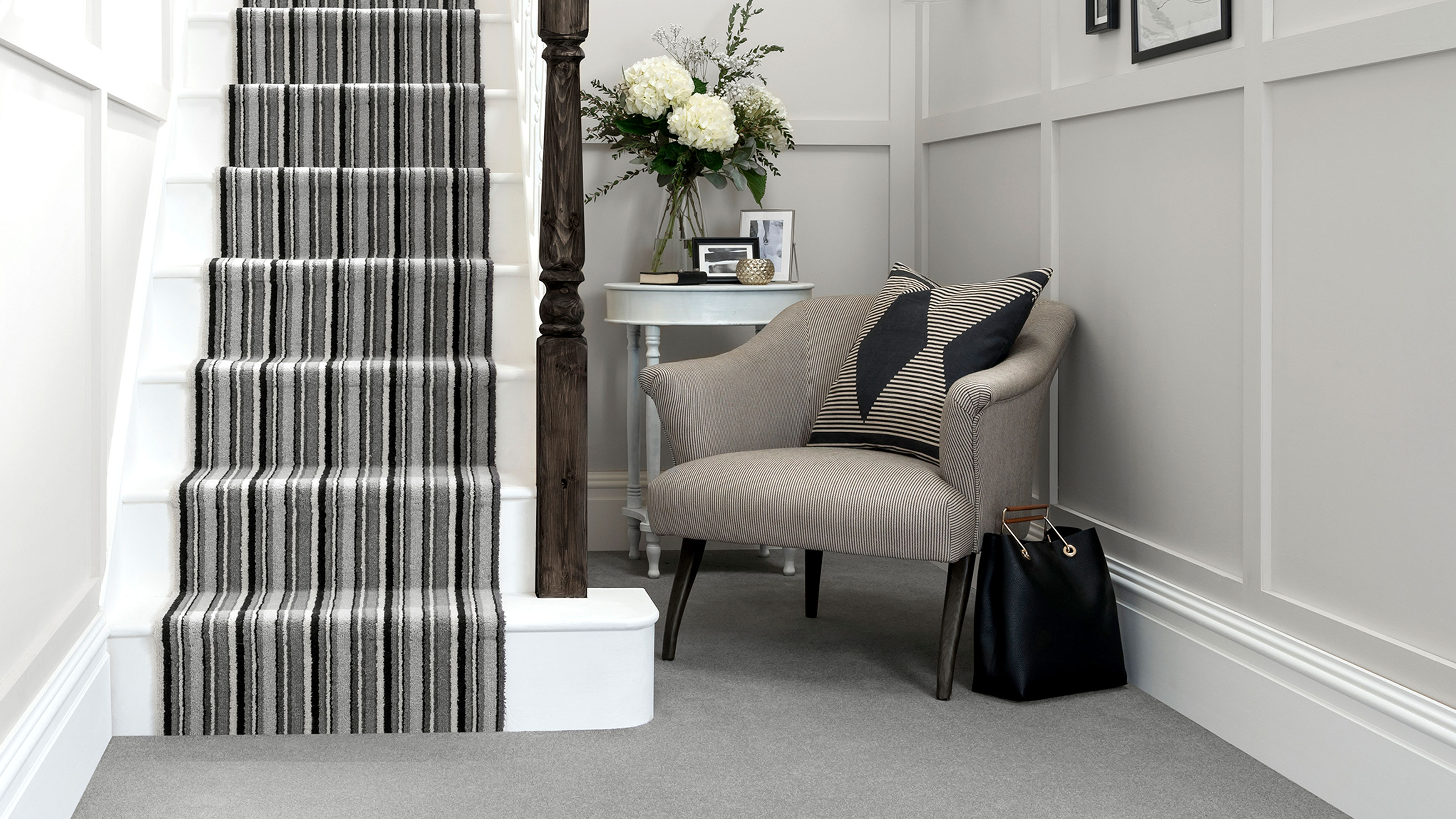
Ideally you should paint your skirting boards before you lay your new carpet. But there will come a point where you will need to paint with the carpet down. Our guide on how to paint skirting boards with carpet will help you keep your skirting boards looking fresh and your carpet paint free.
Get the Homebuilding & Renovating Newsletter
Bring your dream home to life with expert advice, how to guides and design inspiration. Sign up for our newsletter and get two free tickets to a Homebuilding & Renovating Show near you.
Steve Jenkins is a freelance content creator with over two decades of experience working in digital and print and was previously the DIY content editor for Homebuilding & Renovating.
He is a keen DIYer with over 20 years of experience in transforming and renovating the many homes he has lived in. He specialises in painting and decorating, but has a wide range of skills gleaned from working in the building trade for around 10 years and spending time at night school learning how to plaster and plumb.
He has fitted kitchens, tiled bathrooms and kitchens, laid many floors, built partition walls, plastered walls, plumbed in bathrooms, worked on loft conversions and much more. And when he's not sure how to tackle a DIY project he has a wide network of friends – including plumbers, gas engineers, tilers, carpenters, painters and decorators, electricians and builders – in the trade to call upon.

